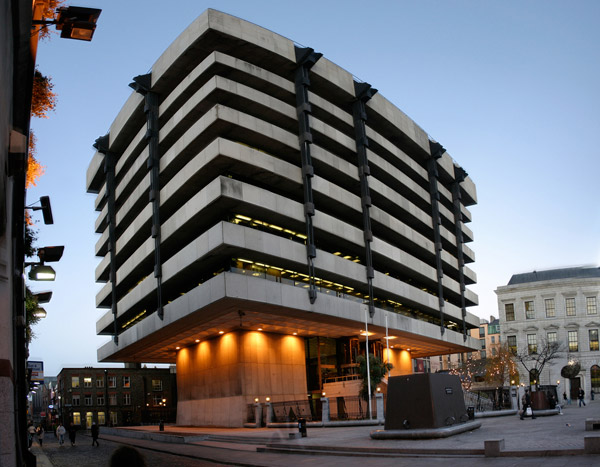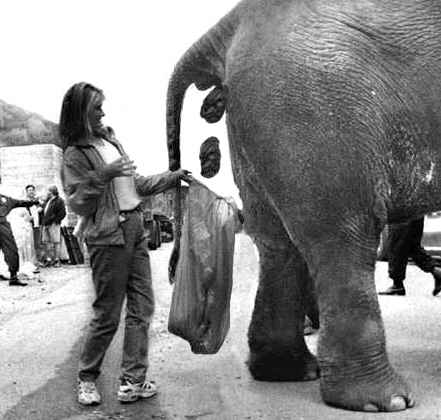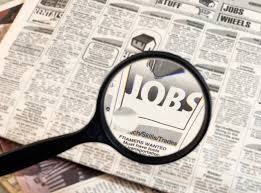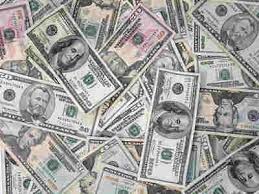All credit to By Alf Field
In February 2009 Zimbabwe was the only country in the world without debt. Nobody owed anyone anything. Following the abandonment of the Zimbabwe Dollar as the local currency all local debt was wiped out and the country started with a clean slate.
It is now a country without a functioning Central Bank and without a local currency that can be produced at will at the behest of politicians. Since February 2009 there has been no lender of last resort in Zimbabwe, causing banks to be ultra cautious in their lending policies. The US Dollar is the de facto currency in use although the Euro, GB Pound and South African Rand are accepted in local transactions.
Price controls and foreign exchange regulations have been abandoned. Zimbabwe literally joined the real world at the stroke of a pen. Money now flows in and out of the country without restriction. Super market shelves, bare in January, are now bursting with products.
I recently visited Zimbabwe in the company of a leading Australian fund manager. As a student of monetary history, I was interested to see what had happened to a country that had suffered hyperinflation. How did the people cope? How is the country progressing now? The current Zimbabwean situation is complicated by the fact that President Robert Mugabe is determined to stay in power whatever the cost.
The first part of this article deals with economics, the hyperinflation and current situation, which is a picture of recovery and potential vigorous growth. The second part deals with politics, both the historical aspects as well as current developments, which are extremely fluid.
We were fortunate to have private interviews with the Prime Minister, Morgan Tsvangirai, and a wide range of business leaders. This provided a quick picture of Zimbabwe past and present.
There are common denominators in all hyperinflations. Generally government finances reach a point where large budget deficits cannot be financed by taxes or borrowings. The choices come down to austerity (with the government cutting back its spending) or by funding the deficit by creating local currency through the printing press, leading to the inflation tax. This is always a political decision, but the line of least resistance is the printing press. Cutting government expenditures and laying off bureaucratic staff is anathema to most politicians.
In Zimbabwe, Robert Mugabe has made it his mission to remain President for life. This has caused him to infiltrate his supporters into the army and police force. He also used Government finances as a way of funding patronage. His use of the printing press was liberal and nobody was prepared to stand up against him. This eventually led to inflation gathering momentum to the point where the armed forces were getting rebellious – they wanted more money. When Mugabe caved in to these demands, the Zimbabwe Dollar plunged.
Shortly after Mugabe was elected President in 1980, the Zimbabwe Dollar was worth more than the US Dollar. The ongoing abuse of the financial system eventually produced a runaway inflation. The largest bank note issued in Zimbabwe was for One Hundred Trillion Dollars and is pictured below. These notes are now collector’s items and I had to part with US$2 to a street vendor to acquire the note depicted below.
The worst trauma for ordinary people during the hyperinflation was lack of food. This was due mainly to the imposition of price controls. If the cost of production of an item was $10 and the price controllers instructed that the item could only be sold for $5, the business would soon go bankrupt if they sold at the controlled price. The result was that production and imports just dried up, hence the empty shelves in the supermarkets.
People survived by shopping in neighboring countries and relied on assistance from South Africa and the aid agencies. Companies survived the hyperinflation with great difficulty and often by ignoring laws. Although companies were left without debt post February 2009, they were also left deficient in working capital and had dilapidated plant and equipment. Regular repairs and maintenance could not be afforded. Most companies now require urgent recapitalization.
There has been a major exodus of Zimbabweans over the years, estimated at about 3 million prior to 2008. Many of these were qualified people who were subjected to Mugabe’s campaign of terror. During the latter stages of the hyperinflation there was a further exodus because people were starving. Most of these people went south into South Africa. The current population of Zimbabwe is estimated to be between 10 and 12 million people, so the numbers that have fled the country are significant relative to the total population.
Current economic activity is strongly supported by remittances from Zimbabwean migrants to their families in Zimbabwe. Once the political situation settles down, it is likely that many of these migrants will wish to return to Zimbabwe. Some have already done so. Many activities that perished in the hyperinflation, such as insurance, are now starting to resuscitate.
Credit financing activities are starting to revive. Visa credit cards are once again operating successfully in Zimbabwe, others will surely follow. Banks have had both sides of their balance sheets devastated by hyperinflation and now have no lender of last resort to call on. They are understandably cautious in lending the deposits that are slowly filtering back into the system. Banks also lost much of their equity capital. Barclays Bank survived because it had 40 branches where the bank owned the real estate and had a strong parent. These properties plus some foreign currency holdings represent the equity capital on which the bank currently operates.
In a country with no debt, only assets, people and companies are under geared. With the ultra cautious lending policies of the banks, there is a huge opportunity for foreign investors in the credit purveying industry.
There has been a sharp rise in economic activity since February. Real wages have risen substantially compared to a year ago. Whatever workers were paid in Zimbabwe Dollars during the hyperinflation bought virtually nothing. Now even the minimum wage of around $100 per month allows for basic purchases. A 10kg bag of maize meal, a staple in the local diet, costs $3.50 and lasts for two weeks. Demand for products and services is increasing rapidly. Corporate profits are rising, leading to greater tax revenues for the Government, augmented by rising VAT taxes. Greater Government revenue allows for greater Government spending.
This self-reinforcing loop will continue. The improvement in the economy will become dramatic once Mugabe leaves the scene. At that time aid agencies, NGO’s, Charities and foreign governments will start injecting large volumes of funds and assistance into the country. They refuse to commit any meaningful funds while Mugabe is still the President.
With Mugabe out of the way and the economy recovering strongly, one could reasonably anticipate that a large proportion of the Zimbabweans living overseas will return to the country bringing welcome skills and capital. Indeed foreigners will also be attracted to investing in the country in those circumstances.
It is fascinating to see how rapidly the economy is recovering. It is a great testament to what can be achieved in a free enterprise environment by the elimination of controls combined with the institution of new money that people trust. It needs to be money that their Government cannot create via the printing (or electronic) press.
The economic future of Zimbabwe is likely to be in mining, agriculture, tourism and service industries, especially those providing infrastructure and maintenance facilities. There remain many problems, not the least being chronic unemployment, but the future looks bright beyond the Mugabe horizon. The population is amongst the best educated in Africa and most people can speak English. With the Zimbabwe’s natural assets, there is scope for realistic optimism about the economic future, especially once the current political difficulties are overcome. The population has been brutally traumatized by the hyperinflation and the political situation. They really deserve a decent change of fortune.
THE POLITICAL SITUATION
To understand what has happened and is happening in Zimbabwe, it is necessary to look at some history. Modern Zimbabwean history began in 1890 with the arrival of the Pioneer Column of white settlers under Leander Starr Jameson at the behest of Cecil Rhodes. Initially they were searching for gold but when nothing of importance was found, they turned to pegging land for farms. The initial settlers were fortune hunters, grabbing land at every opportunity.
Prior to the arrival of the white settlers, the Shona tribe occupied the northern part of the country called Mashonaland, and the Ndebele tribe were ensconced in the south, called Matabeleland. In 1896 these tribes rebelled against white rule in one of the most violent episodes of resistance in the colonial era. In Matabeleland a somewhat dubious settlement was negotiated but in Mashonaland the Shona chiefs were hunted down until all resistance ceased. No Peace Treaty was ever signed with the Shona tribe.
The Shona, in particular, have never forgotten this. Mugabe, who is from the Shona tribe, has made it his life’s work to recover for his people the land that was “stolen” by the whites. He has repeated this statement on many occasions.
A book by Martin Meredith titled “MUGABE: Power, Plunder and the Struggle for Zimbabwe” published by Jonathan Ball, gives a very readable account of the recent history of Zimbabwe up to 2006, prior to the worst of the hyperinflation. It is required reading for anyone wishing to gain a balanced understanding of what has happened in that country with an emphasis on the period since Independence was granted in 1980.
Returning to the white settlers, there was always an unfair division of land between whites and blacks. This was accentuated after the Second World War when Rhodesia benefited from an influx of white immigrants. Farming boomed as a result of better equipment, better farming methods and better seeds. The number of white farmers increased from 4,700 in 1945 to 8,600 in 1960, increasing the demand for white occupied land. The black population was also expanding and African grievances over land eventually swelled to voluble protest. This is the background to the land invasions on white farms over the last decade. Mugabe was making good his promise to return the land to his people.
In 1962 Ian Smith’s Rhodesian Front party swept to power on their policy of maintaining the status quo for the white farmers. During the 1960’s Britain was in the process of granting independence to its various colonies. Smith attempted to negotiate independence for Rhodesia but Britain would only accede to this if it was on the basis of democratic (one person, one vote) elections. Smith was intent on entrenching white minority rule “forever”, so Britain refused.
On 11 November 1965 the Smith government made a Unilateral Declaration of Independence which they claimed had precedent in the USA Declaration of Independence in 1776. This triggered a range of reactions. Sanctions were imposed by Britain and the United Nations. The black population was outraged, leading to the formation of black resistance movements aimed at changing the government.
Smith introduced the Law and Order (Maintenance) Act which allowed the government to literally do anything without recourse to the Courts or rule of law. One of his first acts was to imprison four black nationalist leaders without trial or publicity. Mugabe was one of these 4 and he spent the following 11 years in prison. He was released in 1974 during a brief cease fire between the Rhodesian forces and the liberation movements. Mugabe took the opportunity to escape across the border into Mozambique where he became leader of the resistance movement and was instrumental in organizing many terrorist raids on farms in Rhodesia.
The terror war became increasingly vicious on both sides. Rhodesian forces regularly crossed into neighboring territories, dealing brutally with the local population suspected of harboring terrorists. The neighboring countries eventually insisted that a peace deal be consummated. They would no longer tolerate liberation movements on their soil. Mugabe reluctantly agreed. The guerrilla war had spread to all corners of Rhodesia, forcing Smith to also come to the negotiating table.
In early 1980 the country became independent and changed its name to Zimbabwe. Mugabe stunned everyone by gaining 63% of the popular vote at the first elections. Despite claims of vote rigging and intimidation of voters, the numbers were so overwhelming that it was conceded that Mugabe had won and he was elected President of Zimbabwe. People just wanted peace.
Mugabe, despite initial claims of moderation, set about entrenching himself as president, a position he wanted to claim for life. Surprisingly Mugabe did not repeal the Law and Order (Maintenance) Act that the white regime had used to cover its many evil acts. Mugabe relied on its terms to justify the terrible things that he perpetrated over the ensuing 3 decades.
These atrocities are recorded in Martin Meredith’s book “Mugabe” and there is no point detailing them now. Suffice to say that he was bent on eliminating his opponents and intent on punishing anyone who criticized him. His Zanu-PF people infiltrated the army and the police force and were at his beck and call to act as thugs when required. Faithful people were rewarded with a range of patronage that he dispensed.
He found a compliant partner in the Governor of the Reserve bank, which became Mugabe’s source of funds to pay his people and to dispense his patrimony. Needless to say, much of the money came from printing new Zimbabwean dollars, which caused inflation to gradually increase. Finally the army and police forces to got cranky, publicly demanding much higher pay.
The following is extracted from Wikipedia.org:
On 16 February 2006, the governor of the
Reserve Bank of Zimbabwe, Gideon Gono, announced that the government had printed ZW$20.5 trillion in order to buy foreign currency to pay off
IMF arrears.
[51] In early May 2006, Zimbabwe's government announced that they would produce another ZW$60 trillion.
[52] The additional currency was required to finance the recent 300% salary increase for soldiers and policemen and 200% increase for other civil servants. The money was not budgeted for the current fiscal year, and the government did not say where it would come from. On 29 May, Reserve Bank officials told IRIN that plans to print about ZW$60 trillion (about US$592.9 million at official rates) were briefly delayed after the government failed to secure foreign currency to buy ink and special paper for printing money.
On 27 June 2007, it was announced that central bank governor
Gideon Gono had been ordered by President
Robert Mugabe to print an additional ZWD$1 trillion to cater for civil servants' and soldiers' salaries that were hiked by 600% and 900% respectively.
[53

Official, black market, and OMIR exchange rates Jan 1, 2001 to Feb 2, 2009. Note the
logarithmic scale
Clearly Mugabe was responsible for the hyperinflation. The causes were those always present in these events. A weak economy, large government budget deficits, inability to borrow funds combined with the political decision not to cut Government spending. Governments are reluctant to lay off government employees, especially those related to the armed forces. The latter might invite a military coup. The only source of funding left is the creation of new money.
A very important factor in assessing the current situation is that Mugabe no longer has his own private source of funds to continue with his system of patronage. The army, police force and civil servants are paid by the Unity Government. Mugabe’s power base must be disintegrating rapidly. He has also become very unpopular. It seems unlikely that he could win an election again, even if he managed to get his thugs to resort to intimidation. People identify Tsvangirai and the MDC with the new monetary disposition and the improved economy, while Mugabe is correctly blamed for the trauma of hyperinflation.
There is also the question of sanctions. In recent speeches Mugabe has said that it was time for sanctions against Zimbabwe to be removed. This is nonsense. It is Mugabe and 200 of his associates who are under sanction by the US and other countries under the Zimbabwe Democracy and Economic Recovery Act. This prevents them and their families from travelling overseas and freezes their external bank accounts.
This combination of circumstances, combined with the fact that he is 86 years old, suggests that Mugabe must be under pressure to resign. It is a logical deduction that behind the scenes Mugabe must be attempting to negotiate a form of amnesty against prosecution. The next month is important as the SADC, which guaranteed the terms of the recent Unity Government, has given Mugabe until 6 December 2009 to comply with all outstanding issues. Details of developments and current Zimbabwe news can be found at
http://www.zimbabwesituation.com/
COMMENTS and CONCLUSIONS.
Having seen the impact of hyperinflation at close quarters, my view is that this is the least desirable method for eliminating excessive debt. The population has been traumatized physically (starvation), mentally and financially. Most people did not have foreign assets or local tangible assets, so lost virtually everything. The companies survived using unusual skills, ignoring laws and protecting working capital by holding foreign currency or purchasing equities.
The alternative option for eliminating excessive debt is to take the tough political decision of allowing ‘too big to fail” companies to fail and accept the unpleasant economic consequences. Excessive Government spending should be curbed. A sound currency, elimination of all rules and controls in a completely free market will produce a much better result in the long term. If this option were adopted, the short term would likely be extremely unpleasant, possibly including an economic depression. It is doubtful whether any Government today has the courage to take this route. Sadly this implies that the world is headed down the path of currency destruction that will eventually result in a Zimbabwean situation for the elimination of debt. Zimbabwe may yet prove to be a role model, demonstrating how rapidly a country can recover from the devastation of hyperinflation and the elimination of debt.
In Zimbabwe the serious problem of the land issue remains to be resolved. Morgan Tsvangirai indicated that security of land tenure was vital. One option is the Zambian model where all land was nationalized followed by the issue of 99 year leases to property holders. The MDC will also look at some form of compensation for farmers who have been dispossessed. They are anxious to see a land audit set up, but Mugabe is stalling on this for obvious reasons.
On mining, the MDC are examining a bill that will require concessions to be developed in a shorter period, perhaps 2-3 years, compared to 100 years currently. They will aim at a combination of royalties and taxes to provide the State’s share of mining profits rather than insisting on a percentage of local ownership.
PERSONAL NOTE.
My family was concerned about me going to Zimbabwe. “Don’t you know that it is a dangerous place?” I admit that I was nervous too. International news on Zimbabwe seems to be preoccupied with violence, particularly the brutal land invasions and physical intimidation in the political sphere. The fact that foreign media have not been allowed into the country until the past few months has resulted in a false image being projected. Mugabe’s thugs have closed down newspapers that were critical of his regime, so news has tended to be pro-Mugabe.
We arrived late on a Saturday evening and due to the massive time change, I woke very early on Sunday morning. I decided to take a walk around central Harare and found my way to the Harare Catholic Cathedral. There were Masses in the local language at 7am, 8am, and 9am, followed by an English Mass at 10.00am. All four Masses were standing room only, as can be seen in the photograph below.
Standing room only at four consecutive Masses at the Harare Catholic Cathedral.
The people were well dressed and looked well nourished. They were all friendly and affable. My view that Zimbabwe was a dangerous place did a dramatic about turn. These were peaceable people who wanted nothing but a quiet life. Walking around the streets, I never felt harassed physically. The curio sellers at Victoria Falls were a pain, but so are street vendors everywhere. They were certainly all friendly and intelligent. They could get involved in a serious conversation and all had strong views about economics and politics. Obviously it is Mugabe’s thugs that people fear, but that is becoming less of a problem.
All my preconceived ideas about Zimbabwe were smashed. I now believe it has a bright future, especially once Mugabe leaves the scene. I was sufficiently encouraged by the prospects for the economy and sufficiently impressed by the high quality of the senior executives of major companies to make some small initial personal investments on the Harare Stock Exchange.
Anyone looking for a safe, interesting, place to visit should consider Zimbabwe. I think that you will be pleasantly surprised and have an enjoyable trip.
By Alf Field taken from kitco
Disclosure and Disclaimer Statement: The author is not a disinterested party in that he has personal investments in gold and silver bullion, as well as in gold, silver, uranium and base metal mining shares. The author’s objective in writing this article is to interest potential investors in this subject to the point where they are encouraged to conduct their own further diligent research. Neither the information nor the opinions expressed should be construed as a solicitation to buy or sell any stock, currency or commodity. Investors are recommended to obtain the advice of a qualified investment advisor before entering into any transactions. The author has neither been paid nor received any other inducement to write this article.















![Reblog this post [with Zemanta]](http://img.zemanta.com/reblog_e.png?x-id=e48da719-9936-4cea-af2b-c875e761d818)




.jpg)












![Reblog this post [with Zemanta]](http://img.zemanta.com/reblog_e.png?x-id=581e4e47-3259-4770-9fb6-0c6abf25e3a7)

![Reblog this post [with Zemanta]](http://img.zemanta.com/reblog_e.png?x-id=a47e6843-666f-4996-abba-8cf29cf4d3ec)
